Abstract
The objectives of this study were to evaluate the current fitness of an area ambulance service based in Belfast and to quantify the physiological demands of accident and emergency work. From a total staff of 230, 105 (46%) volunteered to undergo a series of fitness tests subject to health state. Results based on body mass indices showed that 52% of subjects could be classified as overweight and 10% of subjects as obese. Fitness levels were similar to other comparable samples and showed the expected but not inevitable decrease with age. A simple work related task (walking at 6 km/h) performed in the laboratory showed that 54% of men over 40 years of age and 24% under 40 found it taxing. This would favour selection for accident and emergency work on the basis of functional capacity rather than chronological age. Accident and emergency work consisted of long periods of inactivity interspersed with shorter periods of relatively intense activity, often above the anaerobic threshold. Lactate concentrations measured during a staged emergency incident also suggested that personnel may work at intensities exceeding their anaerobic threshold. The incorporation of physical fitness standards in the ambulance service may be appropriate and consideration should be given to a reduced age of retirement.
Full text
PDF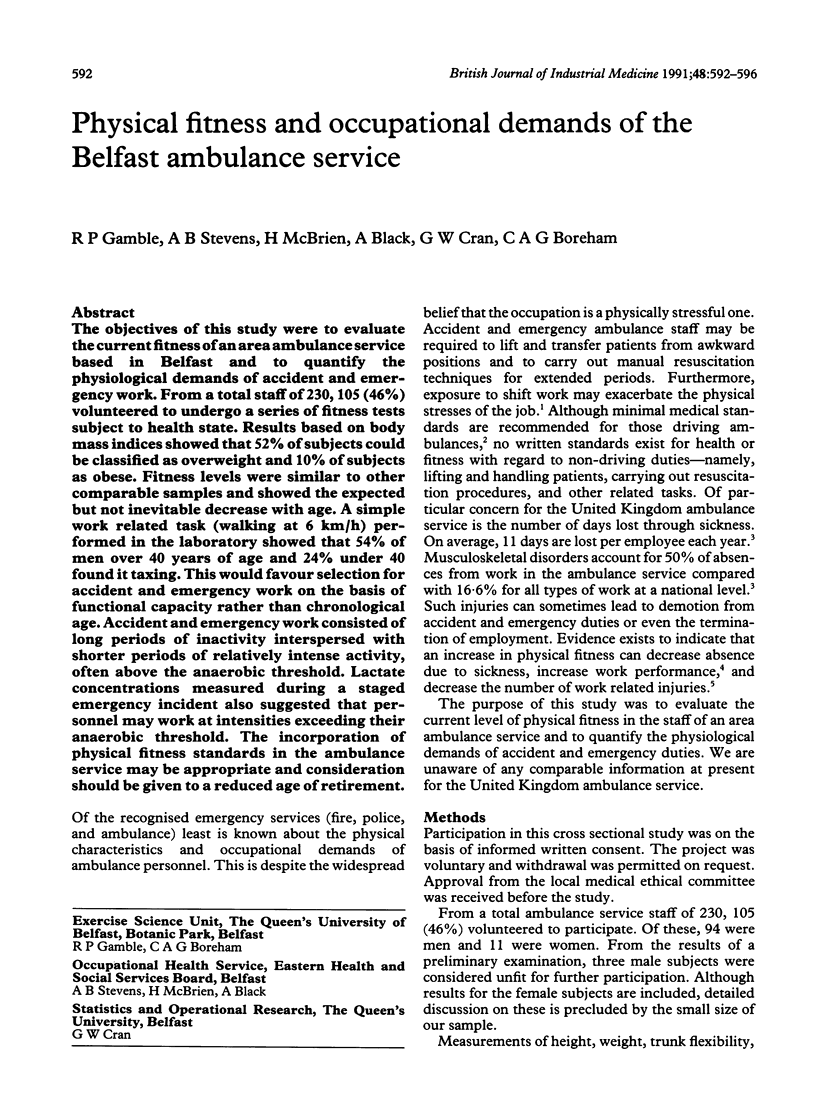
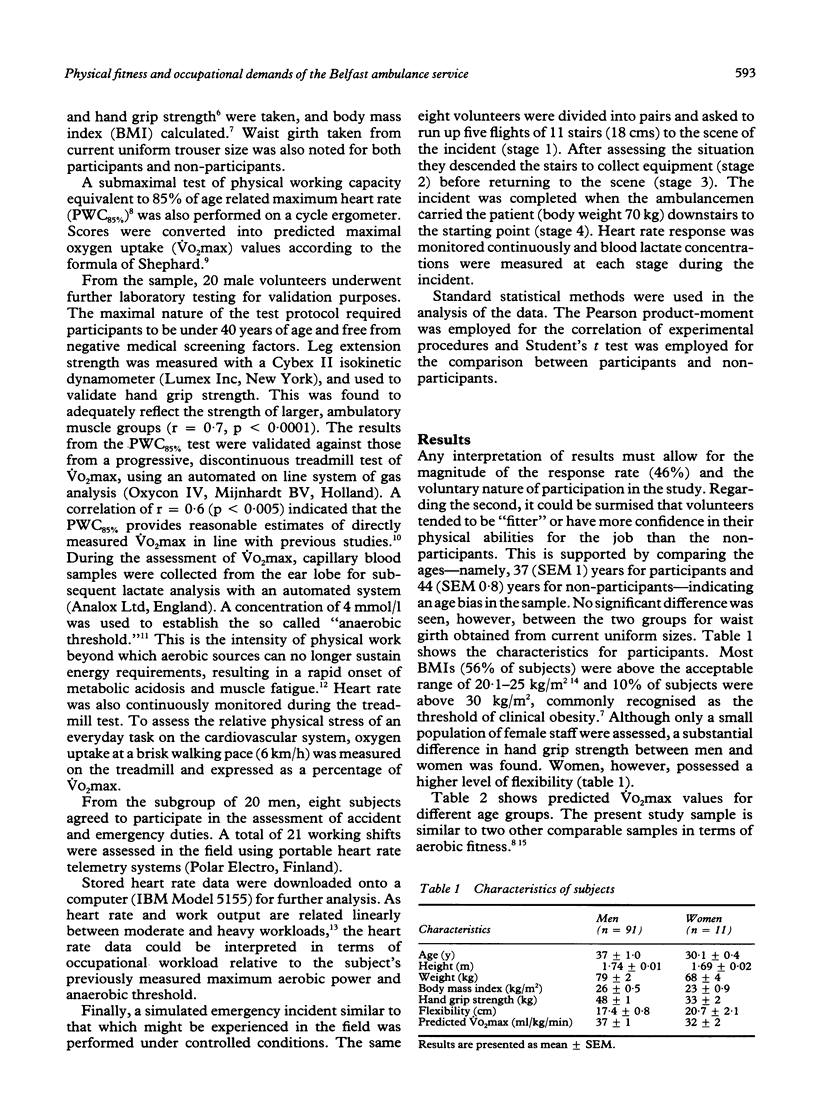
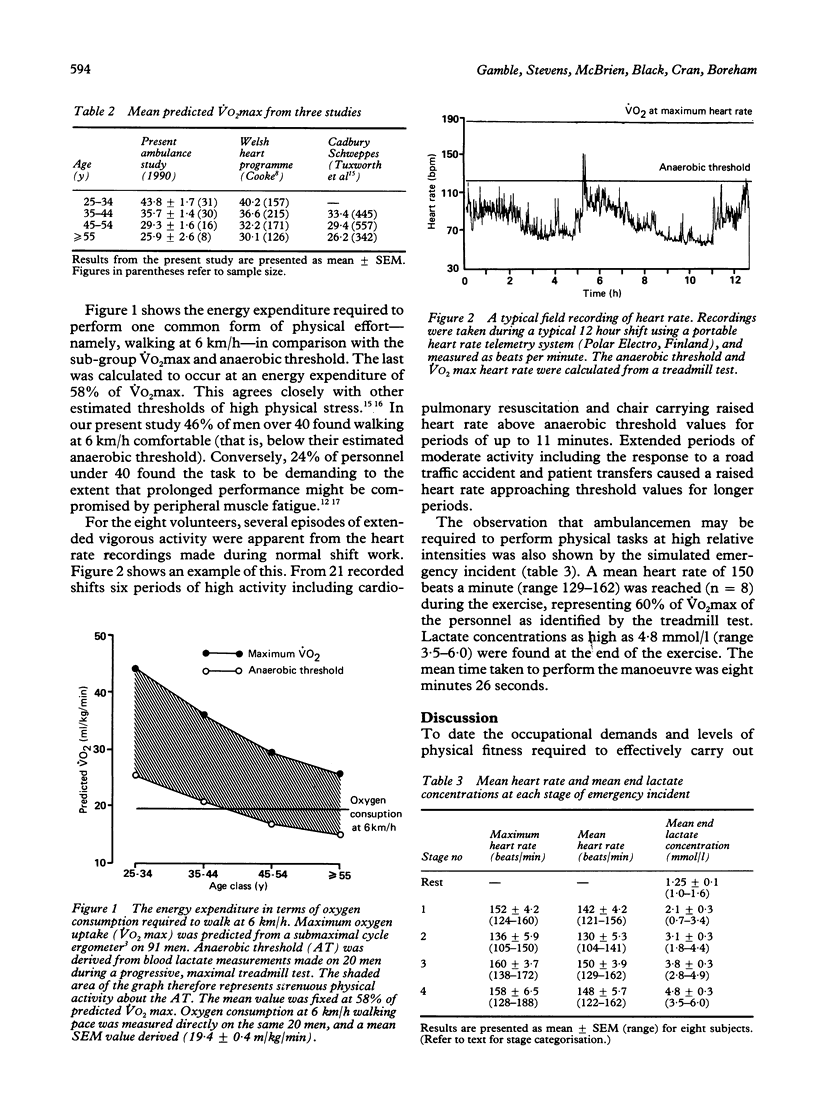
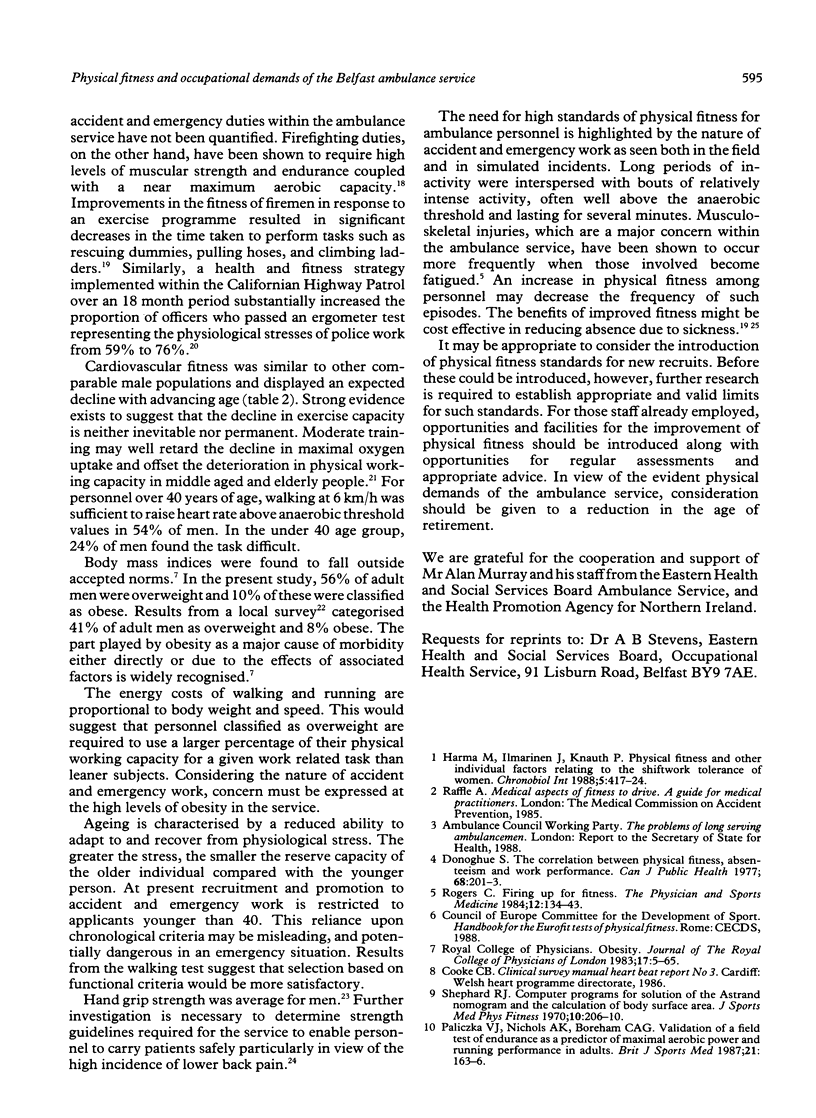
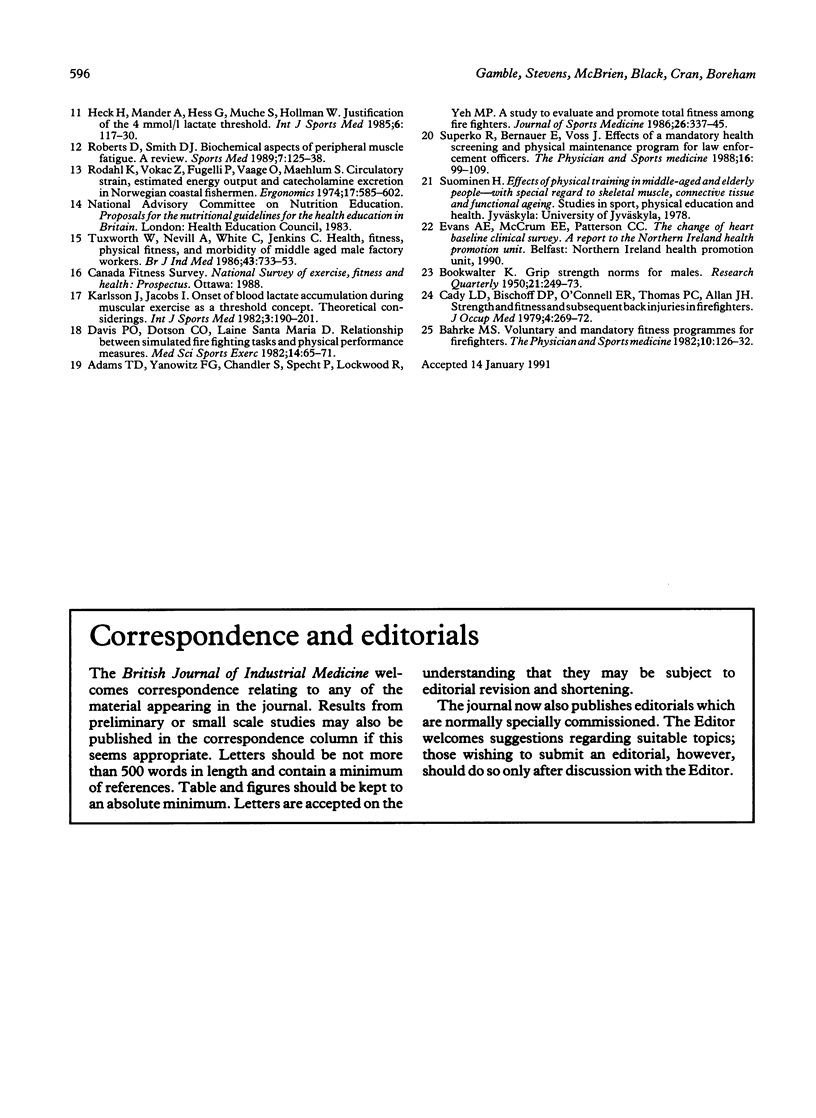
Selected References
These references are in PubMed. This may not be the complete list of references from this article.
- Adams T. D., Yanowitz F. G., Chandler S., Specht P., Lockwood R., Yeh M. P. A study to evaluate and promote total fitness among fire fighters. J Sports Med Phys Fitness. 1986 Dec;26(4):337–345. [PubMed] [Google Scholar]
- Cady L. D., Bischoff D. P., O'Connell E. R., Thomas P. C., Allan J. H. Strength and fitness and subsequent back injuries in firefighters. J Occup Med. 1979 Apr;21(4):269–272. [PubMed] [Google Scholar]
- Davis P. O., Dotson C. O., Santa Maria D. L. Relationship between simulated fire fighting tasks and physical performance measures. Med Sci Sports Exerc. 1982;14(1):65–71. doi: 10.1249/00005768-198201000-00013. [DOI] [PubMed] [Google Scholar]
- Donoghue S. The correlation between physical fitness, absenteeism and work performance. Can J Public Health. 1977 May-Jun;68(3):201–203. [PubMed] [Google Scholar]
- Heck H., Mader A., Hess G., Mücke S., Müller R., Hollmann W. Justification of the 4-mmol/l lactate threshold. Int J Sports Med. 1985 Jun;6(3):117–130. doi: 10.1055/s-2008-1025824. [DOI] [PubMed] [Google Scholar]
- Härmä M., Ilmarinen J., Knauth P. Physical fitness and other individual factors relating to the shiftwork tolerance of women. Chronobiol Int. 1988;5(4):417–424. doi: 10.3109/07420528809067787. [DOI] [PubMed] [Google Scholar]
- Karlsson J., Jacobs I. Onset of blood lactage accumulation during muscular exercise as a threshold concept. I. Theoretical considerations. Int J Sports Med. 1982 Nov;3(4):190–201. doi: 10.1055/s-2008-1026087. [DOI] [PubMed] [Google Scholar]
- Paliczka V. J., Nichols A. K., Boreham C. A. A multi-stage shuttle run as a predictor of running performance and maximal oxygen uptake in adults. Br J Sports Med. 1987 Dec;21(4):163–165. doi: 10.1136/bjsm.21.4.163. [DOI] [PMC free article] [PubMed] [Google Scholar]
- Roberts D., Smith D. J. Biochemical aspects of peripheral muscle fatigue. A review. Sports Med. 1989 Feb;7(2):125–138. doi: 10.2165/00007256-198907020-00004. [DOI] [PubMed] [Google Scholar]
- Rodahl K., Vokac Z., Fugelli P., Vaage O., Maehlum S. Circulatory strain, estimated energy output and catecholamine excretion in Norwegian coastal fishermen. Ergonomics. 1974 Sep;17(5):585–602. doi: 10.1080/00140137408931399. [DOI] [PubMed] [Google Scholar]
- Shephard R. J. Computer programs for solution of the Astrand nomogram and the calculation of body surface area. J Sports Med Phys Fitness. 1970 Dec;10(4):206–210. [PubMed] [Google Scholar]
- Tuxworth W., Nevill A. M., White C., Jenkins C. Health, fitness, physical activity, and morbidity of middle aged male factory workers. I. Br J Ind Med. 1986 Nov;43(11):733–753. doi: 10.1136/oem.43.11.733. [DOI] [PMC free article] [PubMed] [Google Scholar]


